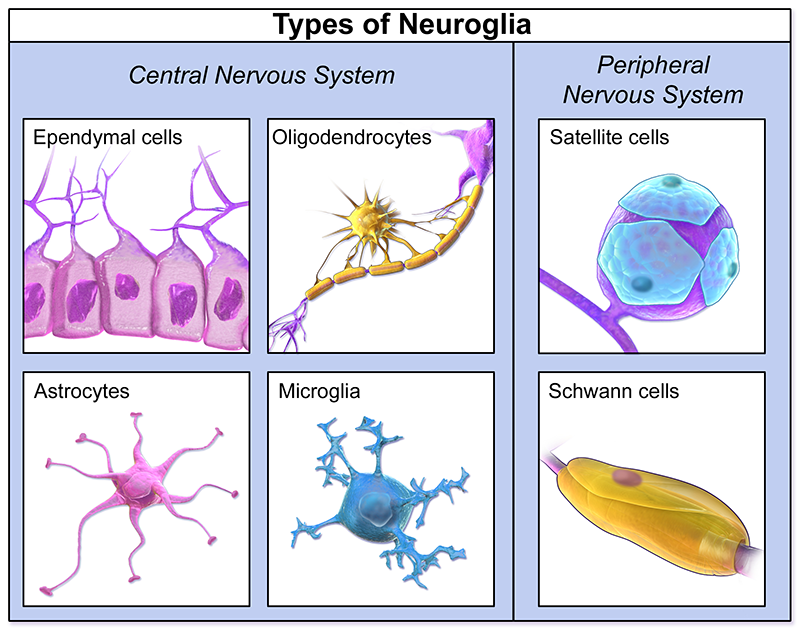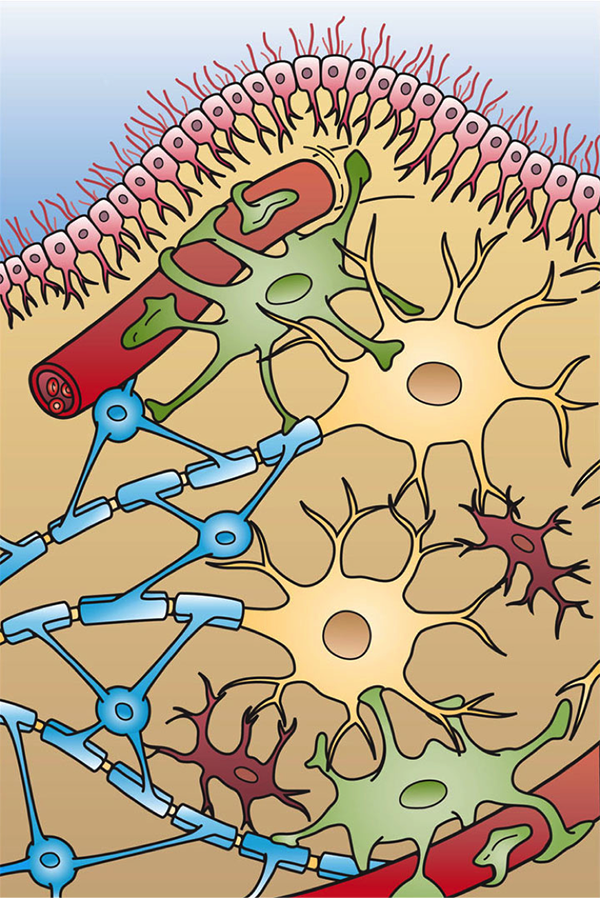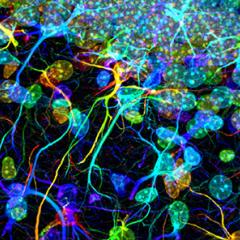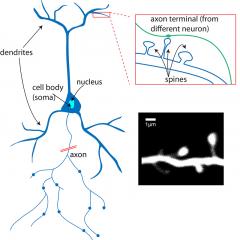Types of glia

Major types of glial cells in the nervous system. Image credit: (Blausen.com staff (2014). "Medical gallery of Blausen Medical 2014". WikiJournal of Medicine 1 (2). DOI:10.15347/wjm/2014.010. ISSN 2002-4436. - Own work)
Microglia
Microglia are the brain’s immune cells, serving to protect it against injury and disease. Microglia identify when something has gone wrong and initiate a response that removes the toxic agent and/or clears away the dead cells. Thus microglia are the brain’s protectors. However, the situation may be different in neurodegenerative disorders such as Alzheimer’s disease—there is evidence that microglia may become hyperactivated, promoting neuroinflammation that can lead to the characteristic toxic protein deposits seen in Alzheimer’s (amyloid plaques and neurofibrillary tangles). Finally, recent work shows that microglia play a role in the developing brain. Normally, far more synapses are created than are needed, with only the strongest, most important ones surviving. Microglia directly contribute to this synaptic ‘pruning’ process by eating up the synapses tagged as unnecessary.
Macroglia
Astrocytes
Astrocytes are star-shaped cells that maintain a neuron’s working environment. They do this by controlling the levels of neurotransmitter around synapses, controlling the concentrations of important ions like potassium, and providing metabolic support.
But astrocytes don’t just maintain the environment around synapses. An active area of research addresses how astrocytes modulate how neurons communicate. Because astrocytes have the ability to sense neurotransmitter levels in synapses, and can respond by releasing molecules that directly influence neuronal activity, astrocytes are increasingly seen as important for modifying synapses.
Oligodendrocytes
Oligodendrocytes provide support to axons of neurons in the central nervous system, particularly those that travel long distances within the brain. They produce a fatty substance called myelin, which is wrapped around axons as a layer of insulation. Similar in function to insulation layers around power cables, the myelin sheath allows electrical messages to travel faster, and gives white matter its name—the white is the myelin wrapped around axons. Multiple sclerosis is caused by a loss of the myelin sheath around neurons.

Major glial cells in the brain include oligodendrocytes (blue), astrocytes (green) and microglia (maroon). Neurons are shown in yellow, with the blue of oligodendrocytes forming the myelin sheath around the axon. (Image: Holly Fischer / CC BY 3.0 via Commons)
Other types of macroglia
Central Nervous System
- Ependymal cells: Ependymal cells line the spinal cord and ventricles of the brain. They are involved in creating cerebrospinal fluid (CSF).
- Radial glia: Radial glial cells are progenitor cells that can generate neurons, astrocytes and oligodendrocytes.
Peripheral Nervous System
- Schwann cells: Similar to oligodendrocytes in the central nervous system, Schwann cells myelinate neurons in the peripheral nervous system.
- Satellite cells: Satellite cells surround neurons in the sensory, sympathetic and parasympathetic ganglia and help regulate the chemical environment. They may contribute to chronic pain.
- Enteric glial cells: Enteric glial cells are found in the nerves in the digestive system.


